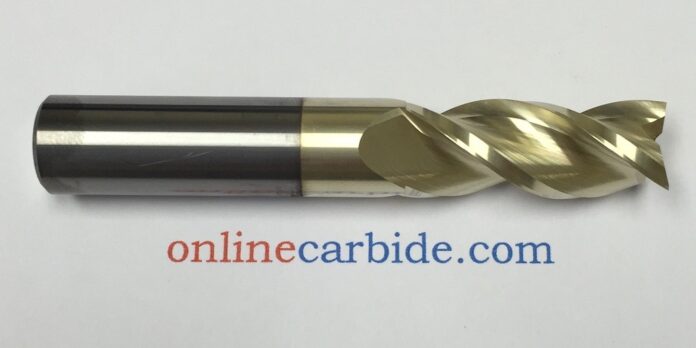All cutting tools will eventually wear down with enough use, but the material used to make those tools can have a huge impact on how long this process takes. While steel tools remain a budget friendly option, it is hard to beat carbide tools in terms of offering a superior lifespan. If you want to learn more about what makes carbide cutting tools such a great option for machinists, read on to find out more about this material and the tools made from it.
What is Carbide?
While carbide tools might look and feel metallic, they are actually a composite material combining both ceramic and metal. The ceramic component is typically tungsten carbide, a fine grey powder. Carbide is roughly twice as strong as steel, but it’s powdered form makes it a poor tool making material on its own. In order to produce tool carbide stock, this powdered material is suspended in a binding metal(typically cobalt). Under a microscope, carbide almost resembles concrete with pieces of ceramic taking the place of aggregate and the cobalt binder taking the place of cement. The resulting material is truly greater than the sum of its parts, with traits of both metal and ceramic tools.
Heat Tolerance
One of the biggest advantages to using carbide cutting tools is their ability to handle high temperatures. Metal tools have to undergo a process of heat tempering in order to strengthen their cutting edges. If they exceed a certain operating temperature, that tempering process can be undone, altering the internal structure of the metal and softening the tool’s edges.
Carbide tools do not have to deal with this issue. Because the cutting power of the tool comes from a ceramic and not a metal, there is no tempering involved. Ceramics remain stable even at incredibly high temperatures, so you can run carbide milling cutters at even higher speeds and feeds than those made from high speed steel allows.
Edge Retention
Another side effect of using ceramic strengthened cutting edges is a longer tool life. Tungsten carbide is harder than steel, which means that it is more difficult to erode. For tools that make countless impacts over the course of their lifetime, this is a valuable trait. If operated at the correct speeds and feeds, the edges on a carbide tool can easily last ten times as long as those on a steel tool.
Rigidity
In addition to being stronger than steel, carbide is also more rigid. This rigidity can help to reduce tool vibrations and lead to smoother operations. Paired with its ability to handle higher temperatures, this means that you can run these tools extremely fast without worrying about the speed damaging your workpiece.
This rigidity is even more important when you think about drill bits. Because drill bits are so long, they naturally wobble a bit at high speeds. This can lead to steel tools oscillating enough to impact hard surfaces at a slight angle and “walk” off their mark. Using carbide tools can significantly improve your accuracy when drilling, even to the point when extremely accurate holes can be drilled without the need for spotting ahead of time.
When it comes to finding carbide cutting tools for sale, it is important to deal with manufacturers who are dedicated to producing high performance, solid carbide tools. Online Carbide is a great American manufacturer that grinds all of their carbide end mills and drill bits with precision 5 axis grinding machines to produce incredible tools. You can see their full catalogue of drill bits and end mills by visiting their website at www.onlinecarbide.com.


